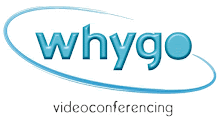Professions that use video conferencing are professions that
interact with people. If you work with people, sell to people, buy from
people, counsel people, teach people, learn from people, or communicate with
people, you very well could be using technology to see and hear those people
during a videoconference. The advantage of this tool is that added
communication level attained when you can see the person you are talking with;
their facial expressions and even body language filling in where mere audio has
gaps.
Many boardrooms carry video conferencing equipment as a standard tool to enable staff meetings with remote workers. This can be useful, enabling branch offices to connect with the main office or telecommuters discuss the week’s agenda with supervisors. Businesses conduct interviews with potential employees and meet with clients with this tool eliminating travel expenses and time. Training seminars are easily attended by an individual or a team. But video conferencing is useful in many other professions.
Education can be greatly enhanced by the video conference. Cyber-schooling is now available for elementary, secondary, and higher education with classes conducted online in a video format, with student interaction, and with whiteboard illustrations. Small school districts can have one teacher with a combined class for several schools so their students have access to AP courses. Tutoring in specific subjects can occur between two laptops or a music student could potentially use higher-end equipment to have voice lessons with a teacher across the globe. Medical students can sit in lectures and discussions can be had with students in coffee shops and living rooms and quads. Graduate students can interview with potential schools in between classes without the time and expense of travel.
The medical field is a natural for the videoconference. Rural residents facing hours of drive time to reach a specialist could consult in a remote clinic that accesses all the expertise needed by a high quality videoconferencing set up with a medical center. A team of caregivers can consult at a moment's notice about a challenging case and view charts, reports, and current patient status together.
Counseling can be done in videoconference or a support group meeting held in a virtual meeting room in the cloud. Participants can access the room with whatever device they have and interact with the entire group, sharing their stories and watching the faces of friends as they help one another with the problems they face.
The arts can be incredibly collaborative with brainstorming sessions and design development occurring electronically as often as needed. With some applications it can be as simple as a phone call yet with the added ability to share documents and sketch ideas. Logos can be created with continual input from the client as the artist makes an idea a reality. Illustrations can be adjusted without miscommunication as easily as sitting at the same table over coffee.
Any enterprise involving design between client and creator relies on accurate communication for a mutually satisfying result. Communication in fact is the oil that makes the machinery of all enterprise run smoothly. Videoconferencing increases communication when limited by time and location enabling any profession to be more successful.
Many boardrooms carry video conferencing equipment as a standard tool to enable staff meetings with remote workers. This can be useful, enabling branch offices to connect with the main office or telecommuters discuss the week’s agenda with supervisors. Businesses conduct interviews with potential employees and meet with clients with this tool eliminating travel expenses and time. Training seminars are easily attended by an individual or a team. But video conferencing is useful in many other professions.
Education can be greatly enhanced by the video conference. Cyber-schooling is now available for elementary, secondary, and higher education with classes conducted online in a video format, with student interaction, and with whiteboard illustrations. Small school districts can have one teacher with a combined class for several schools so their students have access to AP courses. Tutoring in specific subjects can occur between two laptops or a music student could potentially use higher-end equipment to have voice lessons with a teacher across the globe. Medical students can sit in lectures and discussions can be had with students in coffee shops and living rooms and quads. Graduate students can interview with potential schools in between classes without the time and expense of travel.
The medical field is a natural for the videoconference. Rural residents facing hours of drive time to reach a specialist could consult in a remote clinic that accesses all the expertise needed by a high quality videoconferencing set up with a medical center. A team of caregivers can consult at a moment's notice about a challenging case and view charts, reports, and current patient status together.
Counseling can be done in videoconference or a support group meeting held in a virtual meeting room in the cloud. Participants can access the room with whatever device they have and interact with the entire group, sharing their stories and watching the faces of friends as they help one another with the problems they face.
The arts can be incredibly collaborative with brainstorming sessions and design development occurring electronically as often as needed. With some applications it can be as simple as a phone call yet with the added ability to share documents and sketch ideas. Logos can be created with continual input from the client as the artist makes an idea a reality. Illustrations can be adjusted without miscommunication as easily as sitting at the same table over coffee.
Any enterprise involving design between client and creator relies on accurate communication for a mutually satisfying result. Communication in fact is the oil that makes the machinery of all enterprise run smoothly. Videoconferencing increases communication when limited by time and location enabling any profession to be more successful.

